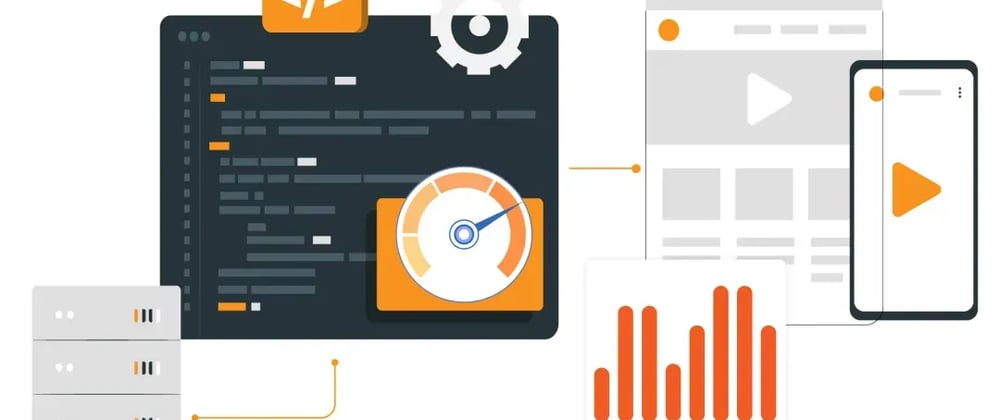Recent research by Gartner showed that smartphones saw a 6% increase in sales in 2021. Smartphones are vital to how we do things, both from a professional and a personal standpoint. When a smartphone doesn't work like it should, it is irksome.
In such a delicate situation, Android device testing is a pivotal process to ensure the delivery of high-quality, robust, and user-friendly apps. Thorough testing has become indispensable in the fragmented Android market, encompassing various devices, screen sizes, and OS versions. This fragmentation makes testing Android apps across multiple devices crucial to ensure consistent functionality and user experience. Let's delve into this further.
Why Android Device Testing is Critical
A. Fragmentation of Devices and OS Versions
Android's open ecosystem has led to various devices from different manufacturers, each with unique hardware configurations and modifications to the Android OS. This fragmentation means that an app that works flawlessly on one device might encounter issues on another. Regular testing on a variety of devices ensures compatibility and a consistent UX.
B. Ensuring ConsistentUX
UX is paramount to the success of any app. Android device testing helps identify layout issues, performance problems, and other bugs that might detract from a smooth user experience. It is essential for delivering a polished, professional application that meets user expectations across different devices.
C. Catching Device-Specific Bugs
Some bugs might only appear on specific devices or OS versions. Without comprehensive testing, these bugs can go unnoticed until after release, potentially leading to poor user reviews and decreased adoption. Device testing helps identify and fix these issues early in the development cycle.
D. Performance Optimization
Android devices have varying processing power, memory, and other hardware specifications. Testing across various devices ensures that the app is optimized for performance, whether running on a high-end smartphone or a more budget-friendly model.
E. Compliance with Google's Guidelines
The Play Store has specific guidelines and requirements for apps. Testing on Android devices helps ensure that an app complies with these guidelines, including aspects like app behavior, compatibility, and performance, which are crucial for app approval and listing.
F. Enhancing App Store Ratings and Reviews
User reviews on the Play Store significantly influence the success of an app. Apps that perform well across various devices can receive positive reviews, leading to more downloads and better visibility in the store.
G. Preparing for Future Updates
The Android ecosystem continuously evolves, with regular updates and new OS versions. Regular tests on real devices help developers prepare their apps for these updates, ensuring compatibility and taking advantage of new features and improvements.
The Importance of Mobile App Performance Testing
Performance testing is a core aspect of Android app testing. It involves evaluating the app's speed, responsiveness, and stability under different conditions. This is where mobile app performance testing tools come into play, providing developers and testers the means to assess an app's performance rigorously. By simulating various user scenarios and network conditions, these tools help identify potential performance bottlenecks.
A general overview of the importance of mobile app performance testing:
- User Experience: The primary reason for performance testing is to ensure a seamless user experience. Slow load times, crashes, and glitches can frustrate users, leading to negative reviews and decreased usage.
- Device and Platform Diversity: With a myriad of devices, operating systems, and screen sizes, it's essential to test how your app performs across these variables to ensure consistency and functionality.
- Network Variability: Users access apps under various network conditions. Performance testing helps ensure your app works smoothly, whether on a high-speed Wi-Fi connection or a slower mobile network.
- Resource Optimization: Apps that consume excessive battery life or memory apps that users prefer not to use. Performance testing helps identify and optimize resource usage.
- Scalability: When the user base grows, your app needs to handle increased traffic without compromising performance. Testing helps you scale your app effectively.
Monitoring and Optimization: Key to App Success
Beyond testing, continuous monitoring of Android app performance is essential. Mobile app performance monitoring tools enable real-time tracking of an app's operation, helping to identify and resolve issues post-launch quickly. This proactive approach is crucial for maintaining an optimal user experience and high app ratings.
Moreover, mobile app performance optimization is a continuous process. It involves refining various aspects of the app, such as code efficiency, resource usage, and responsiveness, to enhance overall performance and user satisfaction.
The Role of Monitoring
Monitoring is the backbone of any successful application. It involves continuously overseeing an app's performance, user interactions, and overall health. By keeping a close eye on these aspects, developers and business owners can identify issues in the Android app before they escalate into significant problems.
- Performance Monitoring: This includes tracking the app's speed, responsiveness, and reliability. Slow or glitchy apps lead to user frustration and, eventually, abandonment.
- User Experience Monitoring: Understanding how users interact with your app is crucial. Analyzing user behavior can reveal insights into what features are popular and what aren't.
- Crash and Bug Tracking: Identifying and fixing bugs quickly is vital. Monitoring tools can help pinpoint exactly where and why an app is crashing.
It's essential to use the right tools to achieve success with monitoring. Developers leverage Appium for their testing needs.
The Power of Optimization
Optimization is the natural next step after monitoring. It involves tweaking and improving the app based on the insights gained from monitoring data.
- Performance Optimization: This might involve code refactoring, using more efficient algorithms, or enhancing server capabilities to improve load times.
- Feature Optimization: Based on user behavior, you can enhance certain features, remove unpopular ones, or introduce new functionalities.
- Resource Optimization: This includes optimizing the app's usage of system resources like memory and battery, which is especially critical for mobile apps.
Implementing Effective Monitoring and Optimization Strategies
- Choosing the Right Tools Select tools that align with your app's technology stack and business goals. Tools like Google Analytics, Mixpanel, or Crashlytics can provide comprehensive insights for monitoring. For optimization, A/B testing platforms and performance profiling tools are essential.
- Establishing KPIs Define clear KPIs to help you measure the success of your app. These could include load times, daily active users, session duration, or conversion rates. Monitoring these KPIs can offer direct insights into the health and success of the app.
- Continuous Feedback Loop Create a feedback loop that includes user feedback, monitoring data, and team insights. This loop will inform the optimization process, ensuring that updates and changes are user-centric and data-driven.
- Regular Updates and Iterations Regular updates based on monitoring data help keep the app relevant and efficient. It also shows users that you are committed to improving their experience, which can foster loyalty and positive reviews.
- Balancing Innovation and Stability While introducing new features is essential, it's equally vital to maintain the app's stability. Striking the right balance is vital to long-term success.
Checklist for Android Testing
A. Understand the Application Requirements
- Clarity on Objectives: Ensure you clearly understand what the app is supposed to do. This includes its core functionalities, target audience, and intended user experience.
- Documentation: Review the application requirements and design documents thoroughly.
B. Device and Platform Testing
- Device Compatibility: Test various devices with different screen sizes and hardware capabilities.
- Operating System Versions: Ensure compatibility with various Android versions, especially the most commonly used ones.
- Network Conditions: Test app performance on different network speeds and connectivity statuses (Wi-Fi, 4G, 3G, and offline).
C. Functional Testing
- Feature Completeness: Check if all the intended features are implemented and working as expected.
- User Interface & User Experience: Test for UI elements' alignment, color, size, and responsiveness. Ensure the UX is intuitive and user-friendly.
- Input Validation: Ensure all inputs, including forms and user data entries, are correctly validated.
D. Performance Testing
- Load Testing: Check the app's performance under heavy data load or high user traffic.
- Memory Usage: Monitor the app's memory usage to ensure it does not consume excessive system resources.
- Battery Consumption: Test how the app impacts the device's battery life.
E. Security Testing
- Data Protection: Ensure that user data is securely stored and transmitted.
- Authentication and Authorization: Verify that the security protocols for user authentication and data access are robust.
- Vulnerability Testing: Check for potential security vulnerabilities within the app.
F. Usability Testing
- Ease of Use: Test the app's ease of use for new users. It should be intuitive and easy to navigate.
- Accessibility: Ensure users with disabilities can access your app. Also, ensure compliance with screen readers and voice commands.
G. Regression Testing
- Automated Testing: Utilize automated testing tools for repetitive tests, especially when new features are added or bugs are fixed.
- Continuous Integration: Implement continuous integration to detect problems early.
H. Internationalization and Localization
- Language Support: Test the app in different languages (if applicable).
- Cultural Nuances: Ensure that the app is culturally appropriate in different regions.
I. Beta Testing
- Real User Feedback: Conduct beta testing with users for real-world usage feedback.
- Bug Reports: Analyze feedback for any recurring issues or bugs that must be addressed.
J. Post-Release Monitoring
- User Feedback: Monitor user reviews and feedback post-release for any issues.
- Updates and Maintenance: Plan regular updates based on user feedback and technological advancements.
HeadSpin's Impact on Android Device Testing
Global Device Infrastructure
HeadSpin's platform offers access to a diverse range of real Android devices worldwide. This global device infrastructure allows for more realistic and varied testing environments, simulating user conditions across different regions and device types. It helps identify location-specific issues and ensures the app performs well globally.Performance Monitoring
HeadSpin provides detailed performance monitoring, which includes tracking load times, responsiveness, and app stability. This monitoring helps identify specific areas of improvement and ensures that the app meets the performance standards users expect. The platform's analytics can pinpoint user experience problems, such as slow response times or resource-intensive operations.Automated & Manual Testing Support
The platform supports automated and manual testing approaches, accommodating various testing strategies and scenarios. This flexibility is crucial for thorough testing, as it allows for both the efficiency of automated tests and the nuanced observation that manual testing provides.Integration with DevOps Tools
Integration with popular CI/CD tools is a crucial feature, facilitating a seamless development and testing workflow. This integration helps maintain a consistent quality standard throughout the development lifecycle and enables faster deployment of high-quality Android applications.AI-Powered Analysis
HeadSpin utilizes AI for analyzing performance data, which helps quickly identify issues and provides actionable insights for optimization. This AI-driven approach enhances the effectiveness of testing and monitoring processes.User Experience Metrics
The platform emphasizes vital user experience metrics, ensuring apps are technically sound and provide a positive user experience. This focus on UX metrics is crucial for user retention and satisfaction.
Read: Why End-user Experience Monitoring is critical?
A Final Word
Effective Android device testing is a technical necessity and a strategic imperative in the competitive app market. Comprehensive performance testing, monitoring, and optimization strategies are crucial for the app's success. By adhering to a detailed testing checklist, developers can ensure their apps meet the highest quality and performance standards, leading to satisfied users and increased app longevity.
Leverage HeadSpin and test on real devices for effective results. Use their advanced AI to break out test results and find out the best next steps you can take.
Article resource: This article was originally published on https://www.headspin.io/blog/ensuring-quality-performance-with-android-device-testing







Top comments (0)